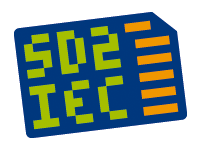 SD2IEC is a hardware mass storage device using an SD/MMC card and interfacing with the IEC bus. It is based on the ATmega644 microcontroller from the Atmel AVR microcontroller family.
SD2IEC is a hardware mass storage device using an SD/MMC card and interfacing with the IEC bus. It is based on the ATmega644 microcontroller from the Atmel AVR microcontroller family.
The most prominent use of SD2IEC is emulation/replacement of a Commodore-1541 disk drive for a C64. Hardware and the microcontroller’s firmware is available as open source (GPL).
Changelog:
2010-06-21 – release 0.9.2
- Bugfix: Rename was broken on FAT.
- Turbodisk is now disabled when running on internal RC clock.
- Button debounce timeout increased.
source: sd2iec.de gitweb forum thread c64-wiki
Sorry, this entry is only available in Italian.
Some new Games & Utility for Commodore VIC-20.
- FCBPaint-0.5. This is a preview of an editor for a new graphics mode I’ve been working on for a while.
- FIFA WORLD CUP 2010. FIFA’s unofficial VIC 20 football/soccer game.
- Odi Est Amo. You will hate this game.
- Q*LOAD V0.1/U. Q*LOAD is a tape loader / mastering tool for the Vic-20.
source: Denial (The Commodore VIC-20 forum)
 The new meeting will be held on July 3rd, 2010 at Orvieto.
The new meeting will be held on July 3rd, 2010 at Orvieto.
We will be guests of the beautiful event CRACK AT THE TREASURE CAT 2010 (www.wardriving.it) with our retrocomputers.
source: retrocommodore.com
 After this update, the collection should contain 37,714 SID files!
After this update, the collection should contain 37,714 SID files!
Thanks to all the people who have helped to make HVSC the collection that it is today, without your help it would be a much tougher task.
This update features (all approximates):
- 1045 new SIDs.
- 897 fixed/better rips.
- 20 PlaySID/Sidplay1 specific SIDs eliminated.
- 133 repeats/bad rips eliminated.
- 1076 SID credit fixes.
- 81 SID model/clock infos.
- 23 tunes from /DEMOS/UNKNOWN/ identified.
- 10 tunes from /GAMES/ identified.
- 81 tunes moved out of /DEMOS/ to their composers’ directories.
- 11 tunes moved out of /GAMES/ to their composers’ directories.
source: hvsc.de
Sorry, this entry is only available in Italian.
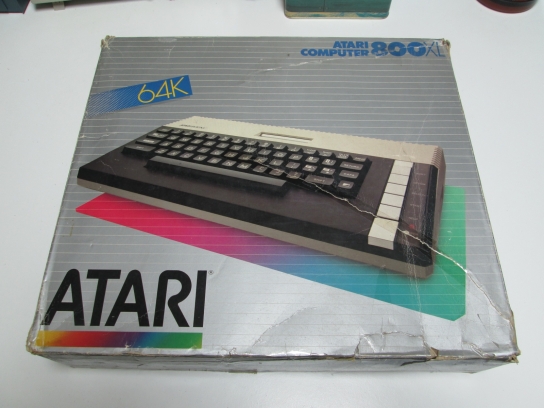
Autopsy:
The Atari 800XL was the third version of the Atari 8-bit line of computers introduced in 1983. The system contained a full 64K of memory, had all the standard VLSI chips (Antic, GTIA, Pokey, PIA) and was in a smaller and more compact design. The keyboard was good, not as good as the 1200XL keyboard, but it had a solid feel to it.
The cartridge port had been move to the top center of the system and used special metal spring loaded doors to allow the insertion and removal of ROM cartridges. This system of spring loaded doors also kept dirt and objects from falling into the cartridge slot when it was not occupied.
Overall the system is basically a cost reduced Atari 800 with a fuzzier picture. The system came with built-in diagnostics and a HELP key. The OS was still slightly incompatible with many original Atari 400/800 software titles, but Atari began to distribute a “Translator” disk which would load up a 400/800 compatible OS into memory so that the 800XL could support those programs.
A never version of the 800XL was being readied called the 800XL-F which included the new “FREDDY” memory management chip that would have allowed for more use of free memory for programs and geater use of graphics by the “ANTIC” video processor.
from: atarimuseum.com
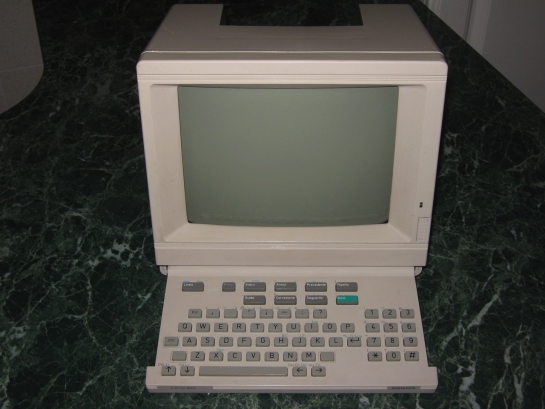
Autopsy:
from Wikipedia:
The Minitel (Videotel) was a Videotex online service accessible through the telephone lines, and is considered one of the world’s most successful pre-World Wide Web online services.
It was launched in France in 1982 by the PTT (Poste, Téléphone et Télécommunications; divided since 1991 between France Télécom and La Poste). From its early days, users could make online purchases, make train reservations, check stock prices, search the telephone directory, and chat in a similar way to that now made possible by the Internet.
source: wikipedia linux terminal
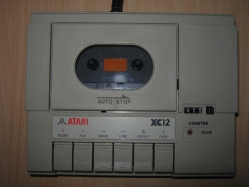
Autopsy:
from Wikipedia:
This is a Atari XC12 tape drive (small model like the 1010, sold worldwide). Similar models were released, mainly in Eastern Europe. These included:
- XCA12 (same case as XC12)
- CA12 (same case as XC12)
- XL12 tape drive (an XC12 with minor changes)
- XC13 – “T2000 ready” version of XC12
source: wikipedia
My Atari 65 XE can show only Black & White pictures, i have found the problem when i have open it, someone has put a screw in the wrong place and the trimmer which adjust the color is broken.
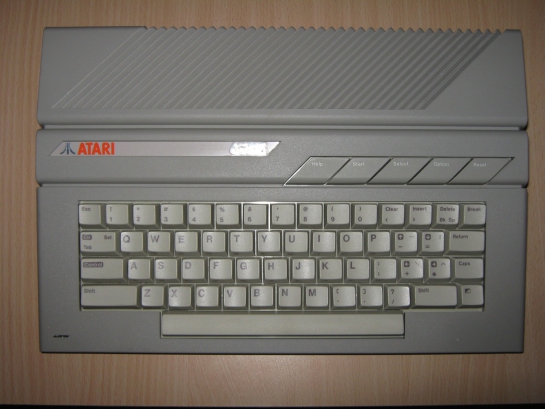
Autopsy:
from Wikipedia:
Jack Tramiel’s Atari Corporation produced the final machines in the 8-bit series, which were the 65XE and 130XE (XE stood for XL-Expanded). They were announced in 1985, at the same time as the initial models in the Atari ST series, and resembled the Atari ST. Originally intended to be called the 900XLF, the 65XE was functionally equivalent to the 800XL minus the PBI connection.
The 65XE (European version) and the 130XE had the Enhanced Cartridge Interface (ECI), a semi-compatible variant of the Parallel Bus Interface (PBI). The 130XE shipped with 128 KB of memory, accessible through bank-selection.
An additional 800XE was available in Europe (mostly Eastern Europe), which was essentially a 65XE repackaged in order to ride on the popularity of the original 800XL in Europe. Unfortunately, the 65XE and 800XE machines sold in Eastern Europe had a buggy GTIA chip, specifically those machines made in China in 1991.
Finally, with the resurgence of the gaming industry brought on by Nintendo, Atari Corp. brought out the XE Game System (XEGS), released in 1987. The XE Game System was sold bundled with a detachable keyboard, a joystick and a light gun (XG-1), and a couple of game cartridges (Bug Hunt and Flight Simulator II). The XE Game System was essentially a repackaged 65XE, and was compatible with almost all Atari 8-bit software and hardware as a result. Bad marketing and a lack of newer releases hampered sales.
On January 1, 1992, Atari corp. officially dropped all remaining support of the 8-bit line.
source: wikipedia
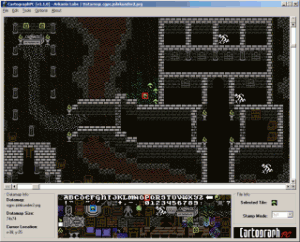 CartographPC is a Windows application created to assist in designing tile-based datamaps. This devtool serves as a companion piece to our C64 native Cartograph devtool.
CartographPC is a Windows application created to assist in designing tile-based datamaps. This devtool serves as a companion piece to our C64 native Cartograph devtool.
The original purpose of CartographPC was to enable us to take nice screenshots of our datamaps without having to take four or six screenshots of smaller windows and piece them together.
CartographPC has since grown into a full editor with the benefit of being able to load datamaps created on the C64 directly into memory and edit, save, and move them back to C64 without much hassle.
It works by creating datamaps using tilesets created on C64 with the old, but popular, ultrafont editor. Datamaps can have dimensions of 1 to 255 tiles horizontally and 1 to 127 tiles vertically. CartographPC allows the user to create a datamap as small as 40×25 tiles (one screen) and up to 255×127 tiles.
Read more…
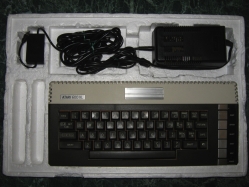
Autopsy:
from old-computers Homepage:
The Atari 800XL, together with the 600XL, were successors of the Atari 400/800 series and the unsuccessful Atari 1200 XL in a more compact case. They could use almost the same software, just so long as the program was written correctly, because of some slight differences between OS versions.
The 800XL had 64 KB of RAM, two joystick ports and kept all the custom chips (Pokey, GTIA, Antic) of the previous models. It also featured the new Parallel Bus Interface (PBI) providing high speed access to the system bus. The new version of the graphic Antic chip offered 16 graphics modes instead of 12 for the 800.
An enhanced version, called 800XLF, appeared in summer 1984. It was equipped with the new “Freddie” chip which allowed faster memory management, especially for graphics display. This version was released in Europe with SECAM video interface.
Alongside the Commodore 64 and the Apple II, the 600 and 800XL were among the most popular home computers.They would be replaced in 1985 with the XE series when Atari launched the ST.
source: old-computers.com wikipedia atari 8 bit collection
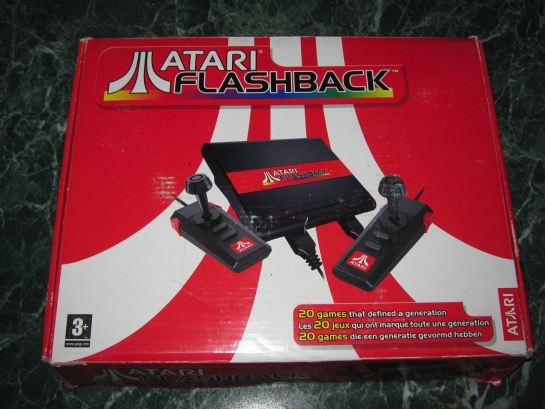
Autopsy:
from Wikipedia:
The Atari Flashback was released in 2004. The console resembled an Atari 7800 in appearance, and came with a pair of controllers which resembled those of the Atari 7800 but were slightly smaller.
The system had twenty games built-in, all originally developed by Warner Communication’s Atari Inc. and Atari Corp. for the 2600 and 7800 game systems. The games which originally required analog paddle controllers were made to work with the included joysticks. It was designed by Atari veteran Curt Vendel, whose company Legacy Engineering Group designs other home video game and video arcade products.
Atari Inc. gave Legacy Engineering ten weeks to design the product, produce its games, and ready it for the 2004 Winter holiday season. The Atari Flashback was based on “NES-on-a-chip” hardware, not resembling either of the Atari systems which the Flashback was supposed to represent. As a result, the games it contained were ports and differed in varying degrees from the original games, and therefore the Flashback was unpopular with some purists.
source: wikipedia
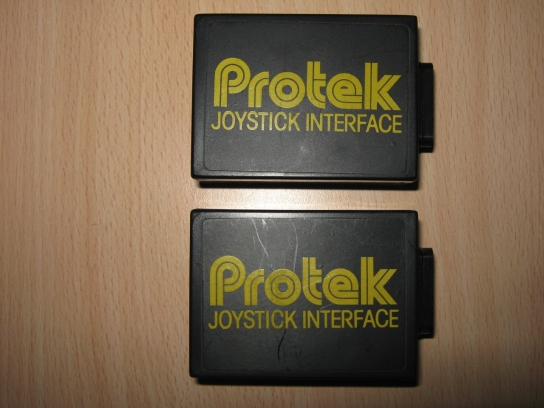
Autopsy:
Thanks to recompute33 for the donation.
The Protek Joystick Interface allow to use a Digital joystick in place of analog joystick for BBC Computers.
 SD2IEC is a hardware mass storage device using an SD/MMC card and interfacing with the IEC bus. It is based on the ATmega644 microcontroller from the Atmel AVR microcontroller family.
SD2IEC is a hardware mass storage device using an SD/MMC card and interfacing with the IEC bus. It is based on the ATmega644 microcontroller from the Atmel AVR microcontroller family.



 The new meeting will be held on July 3rd, 2010 at
The new meeting will be held on July 3rd, 2010 at  After this update, the collection should contain 37,714 SID files!
After this update, the collection should contain 37,714 SID files!











































































 CartographPC is a Windows application created to assist in designing tile-based datamaps. This devtool serves as a companion piece to our C64 native Cartograph devtool.
CartographPC is a Windows application created to assist in designing tile-based datamaps. This devtool serves as a companion piece to our C64 native Cartograph devtool.







































Recent Comments